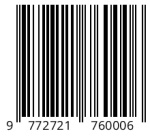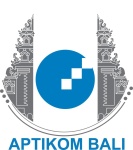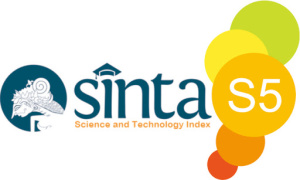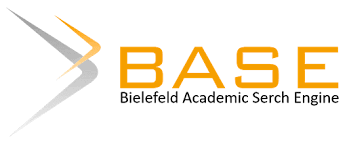RANCANG BANGUN MESIN PEMURNIAN VIRGIN COCONUT OIL (VCO) DENGAN METODE SENTRIFUGAL BERBASIS INTERNET OF THGINGS (IoT)
DOI:
https://doi.org/10.59819/jmti.v15i2.3986Keywords:
VCO Machine, Centrifugal, Arduino, IR (Infrared) Speed Sensor, MobileAbstract
Virgin Coconut Oil (VCO) is a virgin coconut oil produced from the extraction process of fresh coconut meat without the use of chemicals or high temperatures. VCO has high economic value with various health benefits. The process of making VCO involves a centrifugal machine to separate the oil from coconut milk. However, the control of the VCO Purification machine still relies on manual intervention by the operator, which can lead to human error and affect production efficiency. In order to improve efficiency and reduce the risk of human error, Internet of Things (IoT) and Mobile Application technologies can be applied in the control of VCO Purification machines. The programming language used is PHP because it can be accessed on various platforms, especially Mobile. The sensor used is an IR (Infrared) speed sensor for measuring rotational speed. The Mobile Application can be a convenient interface for operators to control and record the operation history of the VCO purification machine. This research has succeeded in developing an IoT and Mobile Application-based control system that is effective in controlling VCO purification machines, increasing production efficiency, and reducing the risk of human error.
Downloads
References
Anoesyirwan, A., Madiistriyatno, H., & Mutmainnah, S. (2020). Peningkatan Kualitas Manajemen Publikasi Ilmiah Menggunakan Metode Agile. ADI Bisnis Digital Interdisiplin Jurnal, 1(2 Desember), 31–39.
Novianda, T. danar. (2022). Perbandingan Metode Preparasi Pada Penentuan Kandungan Metamfetamin Dalam Sampel Kristal Sabu Menggunakan Gas Chromatography Mass Spectrometry (Gc-Ms). Skripsi, 10.
Palupi, B., Rahmawati, I., Fitri Rizkiana, M., Udroto, F. R., Krisna Abdullah, L., Haezer, A. S., & Andriani, N. A. (2023). TTG Pembuatan Virgin Coconut Oil (VCO) untuk Peningkatan Ekonomi Masyarakat Desa Nogosari Kabupaten Jember. Sewagati, 7(6), 970–976. https://doi.org/10.12962/j26139960.v7i6.733
Dan, I., Intech, T., Afi, K., Azzahra, Z. F., & Anggoro, A. D. (2022). Analisis Teknik Entity-Relationship Diagram dalam Perancangan Database: Sebuah Literature Review. 3(1), 8–11.
Febrianti, F., Adi Wibowo, S., & Vendyansyah, N. (2021). Implementasi Iot(Internet Of Things) Monitoring Kualitas Air Dan Sistem Administrasi Pada Pengelola Air Bersih Skala Kecil. JATI (Jurnal Mahasiswa Teknik Informatika), 5(1), 171–178. https://doi.org/10.36040/jati.v5i1.3249
Hamdani, M. A., & Utomo, S. (2021). Sistem Informasi Geografis (Sig) Pariwisata Kota Bandung Menggunakan Google Maps Api Dan Php. Jurnal Teknologi Informasi Dan Komunikasi, 11(1). https://doi.org/10.56244/fiki.v11i1.389
Haris Yulianto, M., Riyanto, A., Noer Abdiellah, F., Afifah Nurbakhsy, Y., Mukarromah, L., Farihatul Maftuhah, E. R., & Fajar Pradipta, M. (2024). Penerapan Alat Sentrifugasi Dilengkapi Penyaring Sebagai Peningkatan Umur Simpan VCO di KWT Nira Lestari. Journal of Approriate Technology for Community Services, 5(1), 73–81. https://doi.org/10.20885/jattec.vol5.iss1.art9
Khairi, M. S. (2023). Sistem Jemuran Pakaian Otomatis Menggunakan Motor Stepper Dan Sensor Berbasis Arduino. 4(1), 88–100.
Lestari, L. (2023). Sistem Kendali Lampu Berbasis Iot (Internet Of Things) Android. 4(1), 88–100.
Mardiyati, S., Khoir Rahman, A., & Nugraha, Y. (2022). Perancangan Sistem Informasi Penjualan barang Berupa Alat Music Di Toko Martmusic. Jurnal Inovasi Informatika, 7(1), 86–95. https://doi.org/10.51170/jii.v7i1.214
Muliadi, M., Andriani, M., & Irawan, H. (2020). Perancangan Sistem Informasi Pemesanan Kamar Hotel Berbasis Website (Web) Menggunakan Data Flow Diagram (DFD). JISI: Jurnal Integrasi Sistem Industri, 7(2), 111. https://doi.org/10.24853/jisi.7.2.111-122
Nita, K., Yesi, M. S., & Noni, S. (2022). Analisis Ekonomi Usaha Minyak Kelapa Murni (Virgin Coconut Oil) di Rumah Produksi KenaKetik Nita. Jurnal Ilmiah Wahana Pendidikan, 8(1). https://doi.org/10.5281/zenodo.5905597
Nurmasari, R., Pinem, S., & Nurkhalifah, U. (2023). Perancangan Pengelolaan Data Pelabuhan Perikanan Nusantara ( PPN ) Pelabuhan Ratu Menggunakan Entity Relationship Diagram (ERD). 9(1), 1–6.
Purwansyah, L. D. (2023). Purwarupa Cable Driven Parallel Robot (Cdpr) Pada Area Asimetris. 5–19.
Rumtutuly, F., Daniel Keipau, Nikolas Ngilamele, Rahel Louk, Angganita Perasoa, Rode Koupun, Vina Tetiwar, Jean Kelmaskosu, Ridolvina Unawekla, Windya Sairdola, Ismo Lellola, Asmirani Alam, Sigit Sugiarto, & Juwaher Makatita. (2023). Pemberdayaan Masyarakat Lokal Melalui Produksi Virgin Coconut Oil Di Dusun Nyama. Jurnal Pengabdian Masyarakat Sains Dan Teknologi, 2(3), 78–86. https://doi.org/10.58169/jpmsaintek.v2i3.175
Saloka, A. S., & Lusiani, C. E. (2021). Pemilihan Proses Pada Pra-Rancangan Pabrik Vco (Virgin Coconut Oil) Kapasitas 30.000 Ton/Tahun Menggunakan Metode Grading. Distilat: Jurnal Teknologi Separasi, 7(9), 230–236.
Saputra, A. (2024). IoT fire detector with Telegram notification. 5(1), 243–252.
Satyaninggrat, L. M. W., Hamijaya, P. D. N., & Rahmah, K. (2023). Analisis Pemodelan Data Flow Diagram pada Sistem Basis Data Wisata Kuliner di Kota Balikpapan. MALCOM: Indonesian Journal of Machine Learning and Computer Science, 3(2), 236–246. https://doi.org/10.57152/malcom.v3i2.920
Suhendar, B., Fuady, T. D., & Herdian, Y. (2021). Rancang Bangun Sistem Monitoring dan Controlling Suhu Ideal Tanaman Stroberi Berbasis Internet of Things (IoT). Jurnal Ilmiah Sains Dan Teknologi, 5(1), 48–60. https://doi.org/10.47080/saintek.v5i1.1198
Tri Sulistyorini, Nelly Sofi, & Erma Sova. (2022). Pemanfaatan Nodemcu Esp8266 Berbasis Android (Blynk) Sebagai Alat Alat Mematikan Dan Menghidupkan Lampu. Jurnal Ilmiah Teknik, 1(3), 40–53. https://doi.org/10.56127/juit.v1i3.334
Utami, F. H. (2022). Aplikasi Pelayanan Antrian Pasien Menggunakan Metode FCFS Menggunakan PHP dan MySQL. 18(1), 153–160.
Downloads
Published
Issue
Section
License
Copyright (c) 2024 pankrasianusjosrisudirman jo, Ayu Aprilyana Kusuma Dewi, I Wayan Dika

This work is licensed under a Creative Commons Attribution-ShareAlike 4.0 International License.
Authors who publish with the Jurnal Manajemen dan Teknologi Informasi agree to the following terms:
1. Authors retain copyright and grant the journal the right of first publication with the work simultaneously licensed under a Creative Commons Attribution License (CC BY-SA 4.0) that allows others to share the work with an acknowledgment of the work's authorship and initial publication in this journal.
2. Authors are able to enter into separate, additional contractual arrangements for the non-exclusive distribution of the journal's published version of the work (e.g., post it to an institutional repository or publish it in a book), with an acknowledgment of its initial publication in this journal.
3. Authors are permitted and encouraged to post their work online (e.g., in institutional repositories or on their website) prior to and during the submission process, as it can lead to productive exchanges, as well as earlier and greater citation of published work. (See The Effect of Open Access) .





















